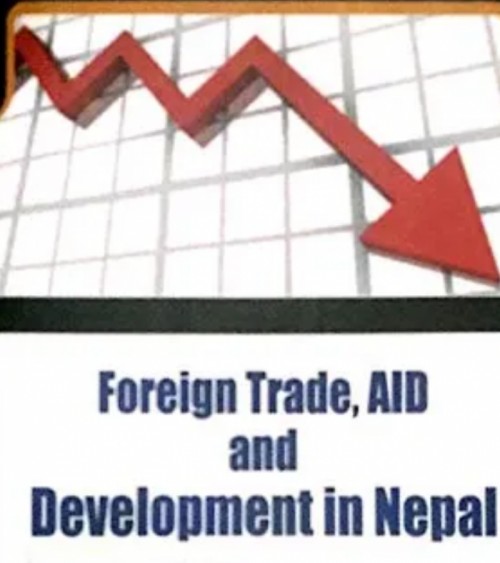
"Unlocking Nepal's Foreign Trade: Growth, Challenges, and Opportunities"
-
- 0 Share
- 551 Views
Nepal, a landlocked country in South Asia, has a small but growing foreign trade sector that plays a crucial role in the country's economy. Foreign trade involves the exchange of goods, services, and capital between countries. It provides Nepal with the opportunity to obtain goods and services that it cannot produce domestically and, conversely, to sell its products to foreign markets.
1. Nepalese Foreign Trade: Explanation
Nepal's foreign trade consists of imports and exports with countries across the globe. Since it is landlocked, trade is largely dependent on India as its primary trading partner, although Nepal also engages with other countries, including China, the United States, and various European nations.
- Imports: Nepal imports goods and services that it cannot produce or requires in large quantities. These include machinery, petroleum products, gold, and chemicals.
- Exports: Nepal exports products like garments, textiles, carpets, handicrafts, and agricultural products (such as tea, coffee, and medicinal herbs).
2. Growth of Nepal's Foreign Trade
The growth of Nepal's foreign trade has been shaped by several factors:
Historical Context:
- Pre-1990: Foreign trade was limited and primarily controlled by the state. The trade liberalization after the 1990 people's movement marked the start of significant reforms.
- 1990s to Present: There has been a gradual growth in trade volume, especially with the liberalization of trade policies, the signing of international trade agreements, and efforts to diversify trading partners.
Key Growth Factors:
- Trade Agreements: Nepal is a member of regional and international trade bodies such as SAFTA (South Asian Free Trade Area), WTO (World Trade Organization), and BIMSTEC (Bay of Bengal Initiative for Multi-Sectoral Technical and Economic Cooperation), which have opened up trade routes and reduced tariffs.
- Globalization: With the increasing access to global markets, Nepal has been able to expand its exports, particularly in sectors like handicrafts, garments, and agricultural products.
- Infrastructure Development: Improvements in roads, transportation, and communication systems have made it easier for Nepal to trade with neighboring countries, especially India and China.
Growth Statistics:
- Exports have grown steadily, particularly in the textile and handicraft sectors, but are still limited due to the country’s production capacity.
- Imports have been higher than exports, creating a trade deficit (Nepal imports more than it exports), which is a challenge for the economy.
3. Composition of Nepal's Foreign Trade
Nepal’s foreign trade has a diverse composition based on products and trading partners:
Exports:
- Agricultural Products: Nepal’s exports include tea, coffee, herbs, spices, and fruits (like apples and citrus).
- Handicrafts: Nepali carpets, pashmina shawls, and metal crafts are popular in international markets.
- Textiles & Garments: Nepalese garments and ready-made clothing are exported mainly to India and other countries.
- Other Exports: Medicinal herbs, ginger, and other niche products also form part of exports.
Imports:
- Machinery and Equipment: Nepal imports large quantities of machinery for industrial purposes, including construction and agricultural machinery.
- Petroleum Products: As Nepal is a landlocked country, petroleum and natural gas products are major imports.
- Consumer Goods: Nepal imports electronics, chemicals, and other consumer goods from neighboring countries.
- Gold and Precious Metals: Nepal imports a significant amount of gold, which is used for jewelry and investment purposes.
Major Trade Partners:
- India: Nepal's largest trade partner, accounting for over 60% of imports and exports. Most of Nepal’s imports (petroleum, machinery) and exports (garments, agriculture) are to and from India.
- China: A growing trade partner, especially in the import of construction materials and electrical goods.
- Others: The United States, Germany, and Japan are also important for exports like handicrafts and textiles.
4. Problems Facing Nepalese Foreign Trade
Despite growth, Nepal faces several challenges in foreign trade:
a. Trade Deficit
Nepal's imports exceed exports, leading to a trade deficit. This imbalance is primarily due to the dependency on imports for fuel, machinery, and consumer goods. Nepal needs to increase export earnings to reduce this gap.
b. Infrastructure Issues
Being landlocked, Nepal faces logistical challenges, such as:
- Poor roads and transportation networks.
- Limited access to ports (India’s ports are the main entry/exit points).
- Slow border customs procedures with India and China, which delay the movement of goods.
c. Dependence on India
While India is Nepal's major trading partner, this dependency can be problematic, especially in cases of political instability or border blockades (such as the 2015 blockade). Diversifying trade routes is critical to mitigating risks.
d. Limited Export Capacity
Nepal's exports are limited to low-value-added products like raw agricultural goods and handicrafts. The country lacks advanced manufacturing capabilities to create high-value goods for export markets.
e. Access to International Markets
Nepal struggles with accessing global markets due to limited bargaining power in trade agreements and non-tariff barriers in developed countries (such as stringent quality standards).
f. Currency Fluctuations
Nepal's economy is also affected by currency fluctuations, especially in relation to the Indian Rupee, as the exchange rate affects the cost of imports and exports.
g. Limited Trade Diversification
Nepal still relies heavily on traditional markets (India, China) for trade, and there is limited diversification to other regions, especially in Africa and South America.
Conclusion:
Nepal’s foreign trade is gradually growing but faces several challenges related to its trade deficit, infrastructure, export capacity, and over-dependence on India. To improve, Nepal must:
- Diversify its exports and improve the value-added product offerings.
- Improve infrastructure for smoother transit.
- Strengthen its trade relations with countries outside South Asia, including the Middle East and East Asia.
- Focus on improving the quality of products to meet international standards and expand market access.
Please
